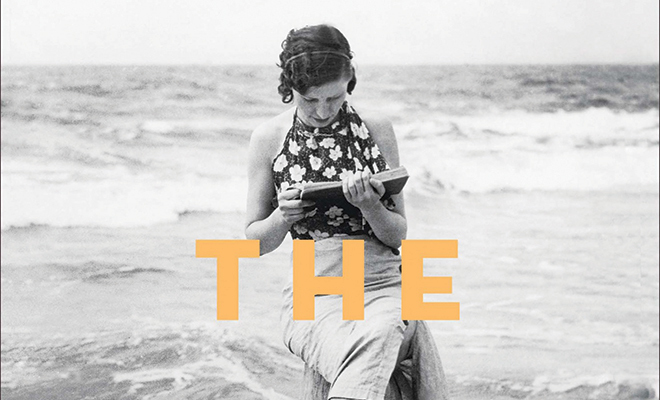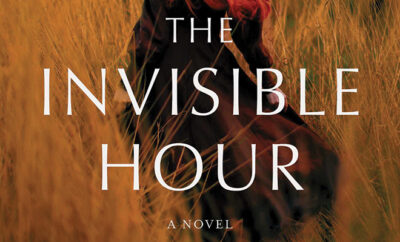
The Boston Girl by Anita Diamant
Fans of best-selling author Anita Diamant’s The Red Tent, Good Harbor and several non-fiction works on marriage, motherhood and friendship, will welcome this novel. Diamant is the founding president of Mayyim Hayyim, Living Waters Community Mikveh and Education Center in Newton Massachusetts, a reinvention of the ancient Jewish tradition of mikveh, ritual immersion in water.
Anita Diamant is a storyteller whose latest novel, The Boston Girl, chronicles the life of a young Jewish woman against the backdrop of the early 20th century. It is a story of family, friendships and feminism that will warm the reader’s heart with its straightforward prose.
It begins in 1985 as Addie Baum is being interviewed by one of her granddaughters. The book is divided up in chunks of time, as she retells her namesake, granddaughter Ava, what life was like as the child of immigrants. “In 1915, there were four of us living in one room…” and so begins Addie’s tale coming of age in the poor section of Boston’s North End.
It was a time when girls barely finished grade school and most labored in jobs that today we would call sweatshops. Girls worked to help keep the tenement roof over their families’ heads and to put food on their meager tables. Addie recalls a time in this country when childhood ended far too soon. Her mother complains that Addie is lazy and doesn’t want to work, only read. “Ethel Heilbron’s daughter has the brains of a donkey and she’s making good money in a shoe factory.” Emotions run high as she relates her mother-daughter struggles and the family dynamics. Her parents are from the old country, Russia, and their marriage is one of mutual misery.
Unlike her folks, Addie’s older sister, Betty, acclimates well to America and becomes a “modern” young woman with a job as a saleslady in Filene’s department store. After Betty moves out, things become even more tense between Addie and her mother. Big sister Betty personifies the women who were caught on the cusp of going the traditional path of marriage or pursuing their own dreams. Less than a decade later, women would earn the right to vote and feminism found its voice in American society.
Middle sister Celia is shy and delicate in nature. She is married off to an older widower named Herman Levine and she tries to take care of his two young sons. But tragedy strikes, and as a result Addie and her parents drift further apart emotionally.
Diamant’s main character is the only one born in America; she has lived her whole life in Boston. The writer explores how Addie became her own person, different from her family, after she discovered a reading club at the Salem Street Settlement House. In the safe confines of Miss Edith Chevalier’s reading club, 15-year- old Addie makes new friends of all backgrounds as the Irish, Italian and Jewish communities of Boston converge at the turn of the century. It is here that Addie’s love of reading fosters her quest for continued knowledge, despite the lack of opportunities most girls had for higher education at the time. It is here, too, that Addie forges lifelong friendships with Gussie, Helen, Filomena and Irene, all female characters coming to terms with what it means to be a young woman in these rapidly changing times.
In order to join her friends at the club’s Rockport Lodge, Addie works for Miss Chevalier, squirreling away her money to afford the summer stay. She runs off to Rockport on her 16th birthday, telling no one in her family, and thus Addie’s adventures begin. “It was the first time I ever slept in a bed by myself…I got my own towel and a pillow that smelled like flowers. So many new smells: beach roses, seaweed, smoke from a bonfire.”
The reader is treated to a visual picture as Diamant describes Addie’s first vacation. We see her blossom professionally, from secretary to writer of a gossip column to teacher, as the book’s heroine holds out for something more than marriage and motherhood. “Typing was not what I had in mind for my first night school class, but it was a good thing to know and it meant a night out of the house without an argument. Even better, there was an English class that met right afterward.”
She is happy to be learning Shakespeare.
Along the way, Addie thinks she is in love a couple of times, and then real love finds her in the most unlikely place when she’s not even looking. Throughout the book, Addie’s tragedies and her triumphs are written in a first-hand account that makes you feel as if you’re having a conversation with your own grandmother over a cup of green tea.
The ending has a bit of a surprise about her granddaughter Ava, but one that won’t require a box of tissues! This well-crafted story of love, loss and self-discovery will have the reader cheering at the conclusion. Addie’s memories are touching, the characters are realistic, and the bits of wisdom dispersed throughout the book still ring true today. ■







